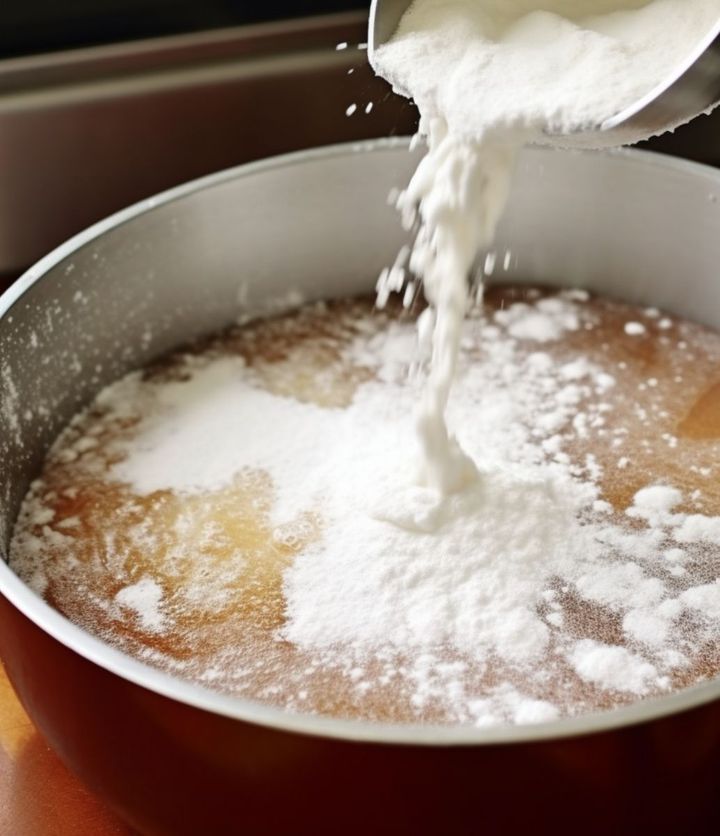For many, the best part of any meal is the gravy that accompanies it. Gravy can help revive roasts that were cooked just a little too long in the oven, and can add a richer, deeper flavor to meat that’s been perfectly cooked. But there’s a reason that the words “Can you make the gravy?” strike fear into many cooks’ hearts.
Making gravy can be tricky, and there are many things that can go wrong. The gravy can end up too thin or, yes, even too thick. And in the worst of cases, you could end up with gravy that has lumps of flour distributed throughout it that just won’t dissolve. But once you know a few tricks and tips when making gravy, you’ll take on the task with more confidence. You may even be the one regularly volunteering to make the gravy.
1. Brown the flour
There are two ways you can add flour (the thickener) to any gravy. You can create a slurry, which involves dissolving the flour into some warm water and blending to remove all the lumps before adding it to the pan drippings. You can also add the flour alone right to the pan drippings and whisk to blend it into the fat. In my experience, the latter is better 99 percent of the time.
This is for a couple of reasons. The first is that it can be difficult to tell if all the flour has dissolved into the slurry. And if it’s not, you’ll end up with lumpy gravy. The second reason is that when you add flour right to the pan drippings, it gives it a chance to cook on its own and brown slightly. This is a great thing, because it can give the gravy a richer, nuttier flavor and can also bring that deeper, darker look that all great gravy has. Plus, as the flour cooks down while in the fat, it will break up, and the chance of seeing any lumps in the gravy is slim to none.
To add flour to gravy, sprinkle the flour evenly over the fat and then quickly whisk the two together. Let it cook for at least two minutes, but no more than four, before adding the liquid.
But like all rules, there is an exception to this one, and that’s if your recipe calls for cornstarch. Cornstarch is thinner than flour, which means that dissolving it into a slurry is easier. Plus, cornstarch is often most effective when it’s been dissolved in liquid before being added to dishes.
2. Add the liquid gradually
Even if you’ve taken care to avoid lumps when adding the thickener, they can still develop when you add the liquid. Any liquid can be used for gravy, including different broths, water, milk, or a combination of any of these. When adding the liquid, start by adding about 1/2 cup and whisking vigorously to avoid lumps. Then add 1/2 cup more and so on, until all the liquid has been added. When you’re nearing the end of the remaining liquid, you can probably add more as the gravy is likely to be smooth and nearing its desired consistency.
3. Check the consistency
As stated previously, gravy can be too thick or too thin. This is why it’s so important to check the consistency at the end of its cooking time. You can check the consistency by coating the back of a wooden spoon and running your finger through the middle to form a line. If the line stays, your gravy may be the right consistency. If the liquid simply runs over it, though, your gravy is likely too thin. If that’s the case, whisk some cornstarch with a bit of warm water and whisk it in to thicken it slightly.
Always taste your gravy as well, as the mouth feel it gives will tell you if your gravy is too thick. When that’s the case, just whisk in more liquid a little it at a time to thin it out.
4. Taste throughout, season at the end
The idea of sprinkling salt and pepper into the gravy throughout the cooking process and then tasting it from a wooden spoon at the end of cooking time does conjure up some nice images. But neither practice should be done.
This is because the gravy will likely start off already generously seasoned, as the pan drippings will be seasoned with whatever the meat was seasoned with. Also, as gravy condenses, the flavors in it will also become far more concentrated, including the salt content.
To get perfectly seasoned gravy, taste it throughout the cooking process. If you think it still needs a little more seasoning, add it at the end, let it cook for a few more minutes, and then taste again. You’ll get the best-tasting gravy every time.
5. Use a fat separator before adding to a gravy boat
Greasy gravy is no good. Not only will it feel greasy and heavier than it needs to, but it can also leave a pool of grease on the plate, which isn’t appetizing for anyone. Luckily, there’s an easy fix. Just pour the gravy into a fat separator.
A fat separator looks like a large measuring cup, but it has a strainer on top and a small spout on the bottom that will open as soon as you press on the handle. Just pour the gravy into the separator and give the fat a few minutes to rise to the top. The water content in the gravy will naturally separate from the oil, making the grease rise to the top. Then you just press on the handle to open the spout so the gravy drips through to another container, such as a gravy boat. Once you get to the fat at the top, stop pressing on the handle to close the spout, and none of it will make its way into your gravy.
6. Make the gravy beforehand

